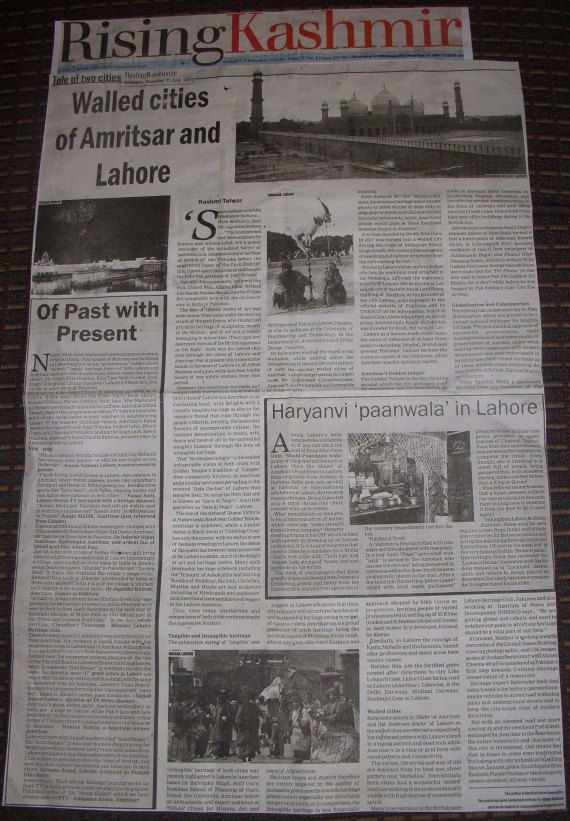
Walled Citiies Amritsar & Lahore —by Rashmi Talwar
-Amritsar-Lahore
By Rashmi Talwar ———–
‘Saare jahaan se achha Hindustan hamara…Hum bulbulain hain iski, ye gulistan hamara ….!’ The lines penned and immortalized by famous poet Allama Iqbal, are a potent reminder of the acclaimed fabric of matchless, rich, composite cultural-heritage of people of two Punjabs before the separating linear of the Cyril Radcliff line, ripped apart destinies of millions in the Indo-Pak partition of 1947, forever.
Not only did commoners, but poets like Faiz Ahmed Faiz, Allama Iqbal, writers like Saadat Hassan Manto, Amrita Pritam felt completely torn with the choices to stay in India or Pakistan.
The fate of lifeless works of art was even worse. They came under the tearing wrath of the mob frenzy, who vandalized priceless heritage of sculptures, mostly of the British – and of art and artefacts belonging to minorities. ‘They spat and destroyed them as of the British oppressor or the Kafir’. Such was the hatred that tore through the cities of Lahore and Amritsar, that at present only a lone statue stands in the heart of Lahore i.e. of Alfred Woolmer and a gun, while Amritsar hardly boasts of any public statues, from that period.
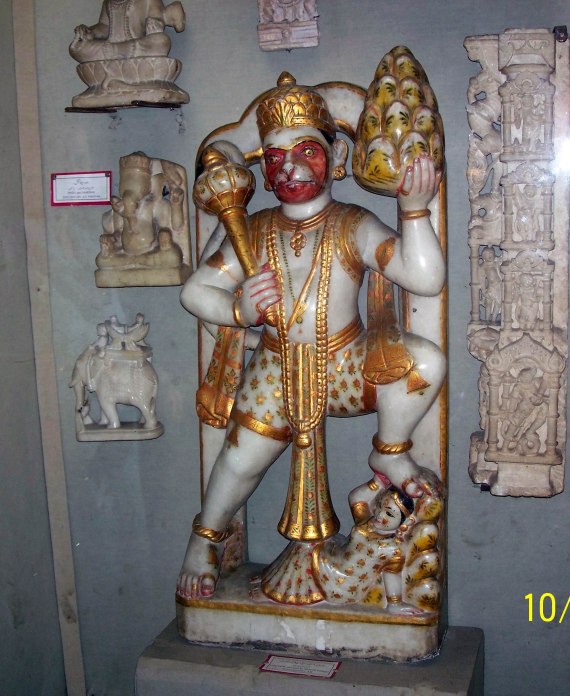
Lord Hanuman idol in lahore museum
However the matchless contrasts and comparisons that conjoin the erstwhile twin cities of Lahore and Amritsar in an everlasting bond, truly delights with a visually tangible heritage as also in the common thread that runs through the people’s lifestyle, housing, the tastes and flavours of incomparable cuisine, the common denomination in music, arts, dance and most of all in the unrivalled naughty humour through the lens of intangible heritage.
That “No one goes hungry” is the exalted indisputable status of both cities with Golden Temple’s tradition of ‘Langar’ (free community kitchen) in Amritsar and a similar sentiment pervading in the revered ‘Data Darbar’ of Lahore that ensures food. No surprise then that one is know as ‘Guru ki Nagri’ -Amritsar and other as ‘Data ki Nagri’ -Lahore.
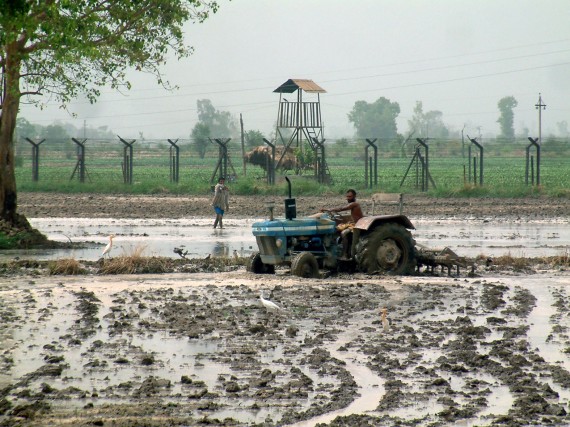
Field on Indo Pak border Amritsar
The fate of the statue of Queen Victoria at Fuhare wala chowk near Golden Temple, Amritsar is unknown, while a similar statue in Black metal at ‘Chairing Cross’ has only the canopy with no statue at one of the main crossings in Lahore, the statue of the queen has however been preserved at the Lahore museum, much to the delight of art and heritage lovers. Many such invaluable heritage artefacts including the ‘Trimurti’ of Ashok pillar and starving Buddha of Buddhist, the Sikh, Christian, Muslim and Hindu art and sculptors including of Hindu gods and goddesses’ idols have found some semblance of respect in the Lahore museum.
Thus, even today, similarities and comparisons of both cities continue despite the oppressive borders.
****
Tangible and Intangible heritage:
The exhaustive matter of ‘tangible’ and ‘intangible’ heritage of both cities was recently highlighted in Lahore by Amritsar based Dr Balvinder Singh, HoD Guru Ramdass School of Planning of Guru Nanak Dev University, Amritsar before an enthusiastic and expert audience at THAAP, (Trust for History, Art and Architecture of Pakistan) Lahore, Pakistan, as also to audience at the University of Engineering and Technology, in the Department of Architecture and Urban Design, Pakistan.
Dr Balwinder, touched the chord in the audience, while talking about the inclusiveness in the architectural pattern of both the ancient walled cities of Amritsar–Lahore and pressed on the urgent need for Integrated Conservational Approach, for the tangible and intangible Heritage of both, as part of his extensive research paper .
His claim has been a product of not only a thorough ground study, but of a painstaking work of passion in collecting historical and documentary proofs on the many tangible similarities. “We urgently need to take stock of situation to save this treasure lest they be lost in the growing consumerist society, gobbling up land, irrespective of either preservation or conservation, of their historicity or essence for posterity”, is his contention, that caught the rapt attention of audiences in a similar dilemma, in Lahore.
Experts in Lahore are aware that their city is replete with structures besides oral and performing heritage owing to reigns of various rulers. Amritsar too is a proud possessor of such heritage being the spiritual capital of Maharaja Ranjit Singh, who at one time, also ruled Kashmir and parts of Afghanistan.
Heritage lovers and experts therefore are visibly angered by the apathy of successive governments towards heritage preservation especially the structural variety on priority, as in comparison, the intangible heritage is less financially draining.
Some diehards feel that “In just a few years, the structural heritage would become ghosts or mere stories or seen only in stage plays or purely as artificial structural decors for restaurants, hotels, resorts and people would gape at these fossilised museum decors in surprise”.
Amritsar, founded by the 4th Sikh Guru in 1577 was turned into a walled city during the reign of Maharaja Ranjit Singh in early 19th century due to urgency of erecting solid defence structures from the encroaching British.
Similarly, Lahore also an ancient walled-city has its umbilical cord attached to the Maharaja, although the legendary origins of Lahore can be traced to Lav or Loh, one of the twin son of Lord Rama, the king of Ayodhya, as the founder of the city-Lahore, acknowledged in the official website of Pakistan and by UNESCO on its information board at Shahi Killa Lahore where the Loh shrine exists. Interestingly, Kasur in Pakistan was founded by Kush, the twin of Lav.
Lahore as a famous trade-route bears the cultural influence of at least three empires including, Mughal, British and present Pakistan. Lahore became the cultural capital of the Maharaja, while Amritsar was his spiritual capital.
Amritsar’s Golden Temple- nucleus
The Golden Temple is the key building around which the city arranged itself. Its foundation can be credited to the approach adopted by Sikh Gurus as progressive. Inviting people of varied professions led to setting up of 52 Kittae (trades) and 32 Hattian (shops) still known as ‘batti-hattan’ first developed, followed by Katras.
Similarly, in Lahore the concept of Katra, Mohalla and Kucha exists, named after professions and many areas have similar names.
Besides this, are the fortified gates named after directions to city Like Lohgarh Gate, Lahori Gate facing road to Lahore (Amritsar). Likewise, is the Delhi Darwaza, Multani Darwaza, Kashmiri Gate in Lahore.
*******
Walled cities
Balwinder points to ‘Shehr’ of Amritsar and the ‘Androon Shehr’ of Lahore as the walled cities are referred to respectively, having varied pattern with Lahore’s lanes in a zigzag pattern and dead ends while Amritsar’s in a ring or grid form with rayed pattern and connectivity.
The values, life styles and way of life are depicted from its land use, street pattern and ‘Mohallas’. Interestingly, both cities had a wonderful ‘mixed’ land use making it socio-economically viable with high degree of community spirit.
Many interventions by the British were made to forward their interests in inculcating English education and introducing greater communication in the form of railways and post office services in both cities. Hence both cities have post office buildings dating to the British era.
Interventions in Maharaja Ranjit Singh’s summer palace of Ram Bagh turned it into a hotch-potch of informal- formal styles, at Gobindgarh Fort, housing residence of Gen O Dyer (murderer of Jallianwala Bagh) and Phansi Ghar (Hanging Room). Similarly at Shahi Killa (Lahore Fort) many incongruous additions were made like the ‘Teh Khana’ (it was also used to house Pak PM Zulfikar Ali Bhutto, for a short while before he was hanged by Pak military ruler Gen Zia-ul-Haq).
*******
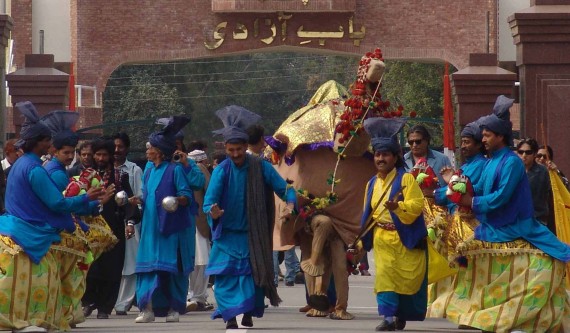
Wagah — Amritsar Lahore Border
But nothing has caused more harm, than globalisation which has proved to be a virtual ‘cultural bulldozer’ for tangible heritage. The lackadaisical approach of successive governments, their unimaginative and lacklustre vision, on preservation of ancient cities while making them congruous with modern development and poor enforcement of building laws have ruined the make up of these ancient cities exhibiting the best in styles of British, Sikh and Mughal architecture.
Tahir Yazdani Malik a passionate heritage lover and President of The Lahore Heritage Club , Pakistan and also working at Institute of Peace and Development (INSPAD) says , we are getting global and robotic and need to redefine our goals in which our heritage should be a vital part of our lives. I know “we will never give up Coke and go for Lassi alone” he laughs, but ‘our monuments are our treasures’ he adds.
At present , Yazdani is working towards restoration of the Ghulam Rasool Building, creating photographic , and GIS images, as also of ‘Andaaz Restaurant’ with Ahmed Cheema which is considered as Pakistan’ first step towards Cultural Heritage conservation of a Restaurant.
Heritage expert Balwinder feels that today’s need is for battery operated non-smoke vehicles to arrest road widening plans and underground streets and to keep the city-scape clear of modern structures.
But with an elevated road and more coming up and the ‘overhead Pod-travel, envisaged for Amritsar in the near future the entire historicity and character of this city is threatened. Old timers feel that in times to come even traditional fruit along with rehris (hand carts) selling Mauve-Jamuns, green-Kaulchapnis from Kashmir, Purple Phalsas or black singarey (water chestnut) all may vanish.
****
Of Past with Present: Lahore-Amritsar -Idhar Bhi, Udhar Bhi! :
Nazim, Mian Amer Mahmood’s announcement to retain original Hindu –Sikh names of 58 streets and buildings in Lahore and not let his “government” make Lahore “Islamic”, made heritage lovers of both Lahore and Amritsar euphoric over this decision.
Hence names like Laxmi chowk, Sir Ganga Ram Hospital, Raja Dina Nath Garden, Dyal Singh College and Library has given Lahore a liberal feel, less visible in other parts of Pakistan.
Humour has a permanent home in Amritsar as much as in Lahore. Where comic greats like Umer Sharif, Moin Akhter, Shakeel Siddiqui, Parvez Siddiqui, Rauf Lala, Irfan Malik and Ali Hassan have brought unparalleled guffaws, Azizi alias Sohail Ahmed’s Hasb-e-Haal programme on Dunya TV with his inimitable political and social satire is most watched in neighbouring Lahore. Of the laughter challenge variety, Amritsar’s funny bone too is a top scorer with Kapil Sharma, Sudesh Lehri, Bharti Singh Lalli, Chandan Prabhakar leading the laugh pack and Ghulle Shah alias Surinder Faristha, a famous Punjabi comedian imparting formal training to comedians. Kewal Dhaliwal, Amritsar’s famed theatre director, presents plays in Amritsar as well as Lahore

langoor mela amritsar
• “Hindu custom of wearing bangles and applying Mehandi has become more popular in Muslim marriages across the border”. -Fauzia Yazdani, Lahore, a senior resource person
• “Pigeon-flying, is still a craze in Lahore, once common in Amritsar, where Indian pigeons breeds like Jalandhari, Ferozpuri and Rampuri, fetch a good price. Besides other sports like “lattu-bazzi”, cock-fights, Dancing horses and ram-fights were common in both cities”. – Faisal Satti, Lahore-Senior TV journalist with a foreign channel.
• “Kasuri Methi and Pakistani rock salt are widely used in Amritsari cuisines and “Kasuri Jutti” is still popular in Punjab”-Anuja Mallik, Amritsar-(just returned from Lahore)
• Pigeons-as traditional folklore messengers- stamped with Urdu couplets thrilled Indian villages like Dauke (Amritsar), surrounded on three sides by Pakistan. ~Dr Inderbir Nijjar, Amritsar- Radiologist Amritsar, and ardent fan of famed poet Faiz Ahmd Faiz.
• Just so, kites with prints of Indian film stars still bring cheer to neighbouring countryside of Lahore. Interestingly, a village, surrounded on three sides by India in Jammu sector, bears two names. ‘Khanjar’ in Pakistan and ‘Chicken Neck’ in India. For Pakistan the village’s shape forks-forward like a knife or ‘Khanjar’ surrounded by India on three sides while for India it is as if the village is ‘chicken neck’ captive in the hands of India. ~ Dr Joginder Kairon, Amritsar- Expert in Folklore.
• “In Lahore, it was common to see Hindus showering rose-petals on the Muharram procession, while Muslims were seen to flock to Ram Leela festivities on the back side of Badshahi Mosque, at Minto Park as also take part in the Diwali and Dussera festivities,” in the days before partition, -Chaudhary Tabassum – Member Lahore Heritage club.
• There are many areas in Lahore that may surprise a visitor from Amritsar. For instance, a Landa Bazaar with the same name exists in Lahore and in Amritsar, selling goods from each other’s country. Both bazaars are interestingly, located near the respective railway stations of the two cities! The Hall Road in Lahore sells electrical appliances, while it namesake “Hall Bazaar” in Amritsar, too sells the same. Incidentally, most “C” grade hotels in Lahore are found near its railway station and bus stand, and the same is somewhat true for Amritsar. Lahore’s ‘Paan Mandi’ displays Indian paraphernalia like ‘chavanparash’ ‘paan leaf’, hajmola, Banarsi sarees, paan masala etc. – Sajjad Anwar Lahore – director at TV News channel .
• Kite flying denounced by Mullahs as Hindu-Sikh festival is still a rage in Lahore despite bans with competitions carrying on from night uptil dawn in the week of Punjabi festival of ‘Basant’ -Nabila Iqbal, Lahore -Senior IT Officer
• Amritsar’s gotta, dabka parsi, machine embroidery in suits are a rage in Lahore while Pak’s lace and lace embroidery its fine chicken embroidery and lawn – a fine cotton of Pakistan from Faislabad remains a hot favourite in Amritsar. – Monica Mehra, a boutique owner, Amritsar
• Lahore glitters with its gold market called “Suha Bazaar”, the “Guru Bazaar” in Amritsar is a nice shopping stop for wedding jewellery. However lately many elite ladies from Lahore are known to buy diamond jewellery from Amritsar. Club culture is prevalent since the times of British, and now the Mall culture has entered our lifestyles in both cities- Zareena Saeed, Lahore- Lecturer in Punjab University.
• Interestingly, ‘Kuch toh log Kahenge’ popular serial on Sony TV in India gives its credit on storyline to popular Pakistani serial of 70s ‘Dhoop Kinare’ which we have already seen on PTV – Anupama Arora, Amritsar-from Kashmir.
**********
Traditional Amritsari and Lahori food is – “Laajawab” and “Buraaaa”..!!
No Amritsar Lahore
1 Aamritsari Famous Veg & Non-Veg : Champ, Tava Tikka, Brain Curry, Tandoori Chicken, Seekh Kabab, Fish Haryali Kabab, Amritsari Fish Fry, Machi Kabab, Raita, Sarson Ka Saag, Shammi Kabab Lahori Famous Veg & Non-Veg : Nihari Paye, Sree Paye, Shorba Kabab, Kathi Kabab, Gurde-Kapoore, Amritsari Fish Fry, Rann, Mutton Karahi, Sarson Ka Saag, Murg Takka Tak, Raita, Reshmi Kabab
2 Indian Rotis: Allo Ke Kulche, Bread Kulche, Butter Naan, Missi Roti, Onion-Garlic Naan, Poori, Makki Ki Roti, Bhega Kulcha, Rumali Roti Pak Rotis: Tillian Wale Kulche, Rogni Naan, Kasuri Methi Kulche, Manji Dee Dewan Waly, Lahore Special Kulche, Poori, Mhandrra Kulcha, Makki Di Roti
3 Amritsari Desi Snacks: Samose, Sat-Poore, Kachori, Mutter, Paneer Pakore, Onion And Veg Pakore, Dhokla, Papri Chat, Golgappe, Tikki, Bun-Chaney, Pao Bhaji, Khandavi Lahori Desi Snacks: Golgappe, Fruit Chat, Dahi Bhaley, Pakore, samosa
4 Amritsari Drinks : Masala Chai, Coffee, Juices, Cane Juice, Buttermilk, Lassi, Mango Shake, Shikwanjvi, Bantey Wali Lemonade, Mausmi Juice, Nimbu Chai, Noon Chai/ Lahori Drinks : Kashmiri Chai, Kava, Phalsa Juice, Sugar-Cane Juice, Lassi, Shikwanjvi
5 Amritsari Sweets: Boondi-Besan Ke Laddo, Kalkand, Chena Murgi, Kaju, Badam, Pista Burfi, Pinni, Jalebi , Gulab Jamun, Rasgulla, Kheer , Phirni, Gur Ka Halwa, Mung Dal Ka Halwa, Karah Prasad, Kulfi-Falooda, Gajrrela, Lahori Sweets: Seeweiyaan, Jalebi, Mutanjaan (7 Colored Sweet Rice), Kheer, Phirni, Sheer Khrmma, Badam Khateein , Karachi Halwa, Loki Ka Halwa, Kasoori Katlmey, Lal Khoo Barfi, Kulfa-Falooda, Zarda, Pethhey
Royal Treat of Haryanvi ‘paanwala’ in Lahore
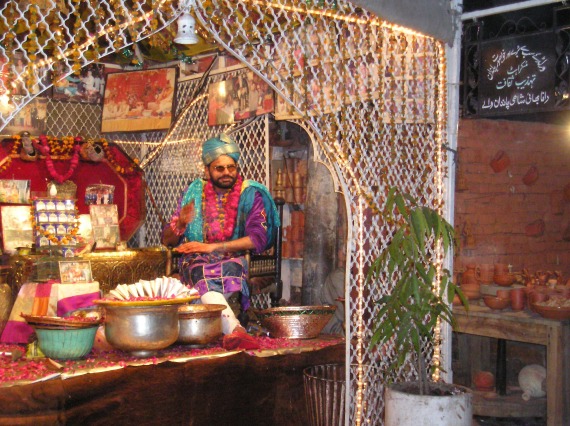
Shahi-paanwala-Lahore
Among Lahore’s most unforgettable visitations is, if one can catch the stall of Rana Bhai Paan Wala, ‘Shahi-Paandaan wala’ in any of the grand exhibitions in Lahore. Once the ‘shaan’ of Anarkali’s Food Street in Lahore, Rana originally from Ambala in Haryana India now sets up stall at national or international exhibitions in Lahore. But his style remains the same. He is still perched atop a royal throne-like chair, covered with satin covers.
What immediately strikes you, is his glamorous attire of satins, which some say, ‘looks straight from a drama company!’ However creating drama is his USP which he does with aplomb by dressing up as famous urdu poets. It is not surprising thus that many a times he is mistaken for a ‘Mirza Ghalib look-alike with ‘Turki topi’ and ‘khussa’ jutti, strings of ‘taveez’ and rose garlands on his wrists.
“What sets him apart is his style” points out Ms Neelima Naheed Durrani, Senior Superintendent of Police (SSP) Lahore recently on vacation in hometown from a UN mission in Sudan. The stock of photographs that Rana grandly displays in his stall with Pakistan’s Cricketing greats and many from the bureaucratic and political spectrum of the country immediately catches the eye.
The Royal Treat: ‘A customer is first sprinkled with rose water and then showered with rose petals. In a leaf bowl “Paan” garnished with “vark” is served to the customer, who can see his own self being pampered in mirrors as well as the close circuit cameras strategically placed in the stall. After a few bites into the melting ‘galoori paan’ added with local made ‘gullukand’ prepared by special briar-rose petals prevalent in upper reaches of Chakwal District, Rana Bhai once again showers rose petals on the customer, to complete the ritual’. Eventhough, one is standing in a street full of people, being pampered thus, with onlookers staring, makes one feel no less than a King or Queen!
It is a different matter however that a hired sweeper, collects the rose petals again and puts them in a big sieve to separate it from the dust to be re-used again!
Talking from Lahore, Rana says he gets regular orders from Dubai and Middle East countries for festive occasions and sets up his stall during festivals and grand Exhibitions. Of course his paan leaf is the very famous Indian ‘Banarsi patta’. Interestingly, Rana has recreated the ‘Lucknavi Bazaar’ innovation with Barbie dolls dressed up in “Lucknavi” Salwar suits and others in burqa placed as decoration that surely becomes a cynosure for foreigners and locals alike.
****
FIRST PUBLISHED IN “RISING KASHMIR” ON 31 JULY , 2012 AS A FULL PAGE
31.630890
74.871552













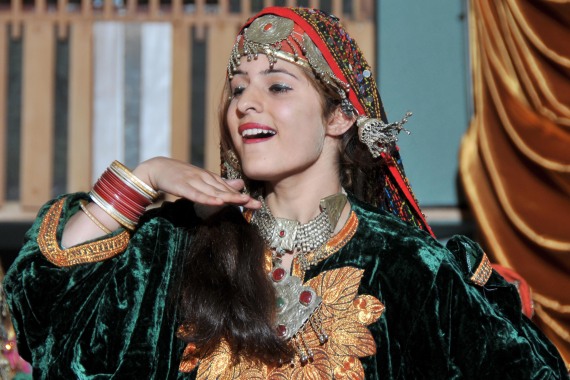




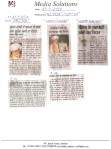
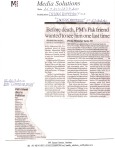


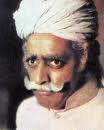
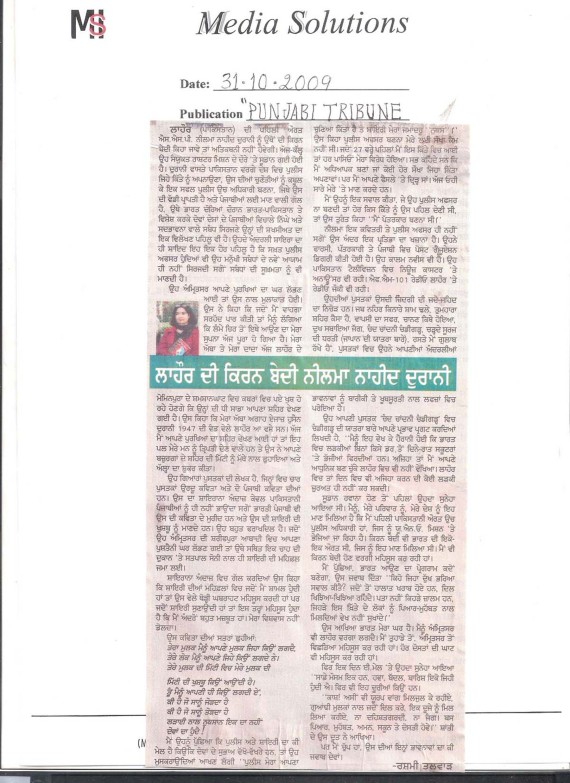












Recent Comments